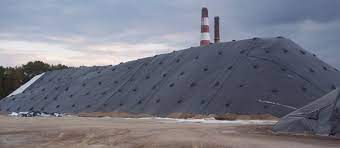Introduction:
Grain tarps and Hay tarps play a crucial role in protecting crops from the elements and ensuring their quality during storage. To ensure their effectiveness and longevity, proper installation and maintenance are essential. In this blog, we will provide you with top tips for installing and maintaining grain tarps effectively.
Selecting the right grain tarp is the first step towards successful crop protection. Consider factors such as the size and shape of your storage area, the type of crop being stored, and the specific environmental conditions. Opt for tarps made from durable materials that can withstand UV rays and provide sufficient coverage.
Proper installation techniques are key to ensuring the tarps perform their intended function. Prepare the storage area, unfold the tarp, and position it over the grain pile. Secure it tightly using bungee cords, ropes, or straps to prevent wind damage and animal intrusion.
Regular inspections and maintenance are vital for identifying any damage or wear and tear. Check for punctures, tears, and loose fastenings. Promptly repair any damage to maintain the tarp’s integrity. Additionally, secure the tarp against strong winds using additional fasteners like sandbags or weighted ropes.
Cleaning the tarp regularly helps maintain its performance and prolong its lifespan. Use mild detergent, a soft brush or cloth, and rinse thoroughly. Store the tarp in a cool, dry place away from direct sunlight and extreme temperatures.
By following these top tips for proper installation and maintenance, you can ensure your grain tarps effectively protect your crops and provide long-lasting storage solutions.
Selecting the Right Grain Tarp:
Choosing the appropriate grain tarp is the first step towards successful crop protection. Consider factors such as the size and shape of your storage area, the type of crop being stored, and the specific environmental conditions you expect to encounter. Opt for tarps made from durable, UV-resistant materials that provide sufficient coverage and strength to withstand the elements.
Proper Installation Techniques:
To ensure optimal performance, proper installation of Grain Tarps is essential. Start by preparing the storage area, ensuring a clean and level surface. Carefully unfold the tarp and position it over the grain pile, making sure it extends beyond the edges to prevent moisture ingress. Use bungee cords, ropes, or straps to secure the tarp tightly, minimizing the risk of wind damage or animal intrusion.
Regular Inspections and Maintenance:
Regular inspections are vital to identify any signs of damage or wear and tear. Routinely check for punctures, tears, or loose fastenings that could compromise the tarp’s integrity. Promptly repair any damage using high-quality repair tape or patches. Additionally, inspect the surrounding area for potential hazards such as sharp objects or overhanging branches that could cause damage to the tarp.
Securing the Tarp Against Wind and Elements:
Strong winds can be a significant threat to grain tarps. Properly secure the tarp by using additional fasteners such as sandbags or weighted ropes along the edges. This will provide added stability and prevent the tarp from being lifted or torn during gusts. Be mindful of the tarp’s tension, ensuring it is tight enough to withstand wind but not excessively stretched, as this may cause unnecessary strain on the material.
Cleaning and Storage Guidelines:
Regular cleaning is crucial for maintaining the tarp’s performance and prolonging its lifespan. Use a mild detergent and a soft brush or cloth to remove dirt, debris, or mold. Rinse thoroughly and allow the tarp to dry completely before storing it. When not in use, store the tarp in a cool, dry location away from direct sunlight and extreme temperatures. Folding it neatly and avoiding sharp creases will help prevent unnecessary stress on the material.
Conclusion:
Proper installation and maintenance of grain tarps are vital for protecting your valuable crops and ensuring their longevity. Select the right tarp, follow the correct installation techniques, and regularly inspect for damage. Secure the tarp against wind and the elements, and clean and store it properly during periods of non-use. By following these essential tips, you can maximize the effectiveness of your grain tarps and preserve the quality of your harvest, ultimately enhancing your farming operations.

As the editor of the blog, She curate insightful content that sparks curiosity and fosters learning. With a passion for storytelling and a keen eye for detail, she strive to bring diverse perspectives and engaging narratives to readers, ensuring every piece informs, inspires, and enriches.










